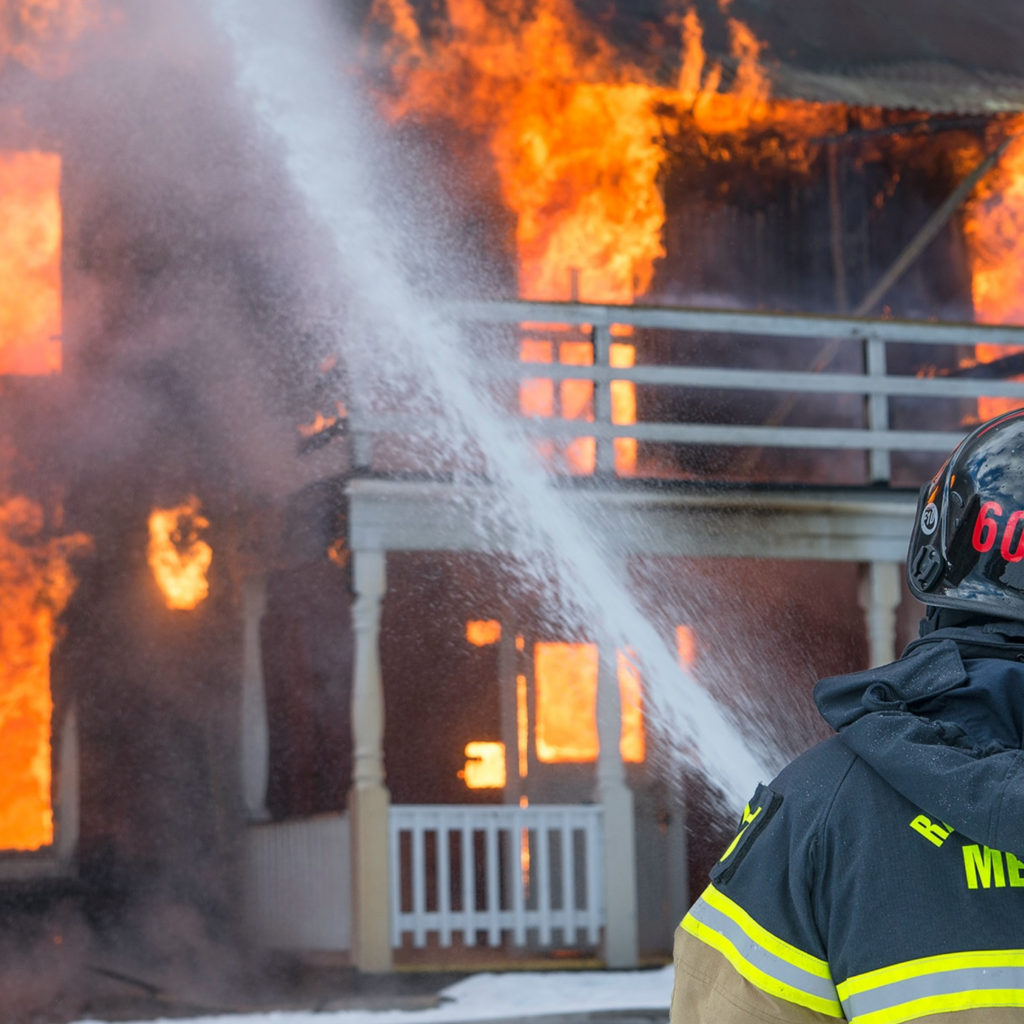If you’ve never had to undergo a claims process for your homeowners’ policy, the task may seem daunting or confusing. Because policies are inherent “if, then” contract-bound agreements between the policyholder and the insurance company, there are many possibilities for how a claim plays out. This is a huge reason why clients prefer to use an experienced, trusted insurance agent like those at J.M. Whitney Insurance and Co. to help you walk through this process. We’ll walk you through some major points in a typical claims process.

Most to Least Common Homeowners Insurance Cause of Loss (Data from 2016-2020)
- Wind and hail (about 40-45%)
- Water damage and freezing (about 18-28%)
- Fire and lightning (22-26%)
- Theft (<2%)
- All other property damage (e.g. vandalism, malicious mischief; 4-8%)

The Event | First Steps
Let’s pretend there was a huge storm that resulted in property damage caused by wind and is covered by your existing homeowners’ policy. You call us at J. M. Whitney, and we help you put in a claim with your insurance company. The next steps will include providing the company with relevant information and pictures relevant to the event and subsequent damage. An adjuster will need to come out regardless to give their two cents about what they think the damage will cost to replace before any repairs/funds are distributed for repairs.

Things to Keep In Mind:
- This is a good time to whip out numbers for two or more trusted contractors that you’ll want to use for getting an estimate for repair costs.
- This is also a good time to take out your home inventory– assess if any personal belongings were damaged. Those costs may be covered under a separate part of your policy.
- If applicable for extreme damage events, total loss payouts may differ depending on the state you live in.
- Depending on whether you own the house or if it’s mortgaged can result in varied next steps.
The initial payment isn’t final.
In most instances, an adjuster will inspect the damage to your home and offer you a certain sum of money for repairs, based on the terms and limits of your homeowners’ policy. The first check you get from your insurance company is often an advance against the total settlement amount, not the final payment.
If you’re offered an on-the-spot settlement, you can accept the check right away. Later, if you find other damage, you can reopen the claim and file for an additional amount. Most policies require claims to be filed within one year from the date of disaster; check with your state insurance department for the laws that apply to your area.

You may receive multiple checks.
When both the structure of your home and your personal belongings are damaged, you generally receive two separate checks from your insurance company, one for each damage category. If your home is uninhabitable, you’ll also receive a check for the additional living expenses (ALE) you incur if you can’t live in your home while it is being repaired. If you have flood insurance and experienced flood damage, that means a separate check as well.
Your lender or management company might have control over your payment.
If you have a mortgage on your house, the check for repairs will generally be made out to both you and the mortgage lender. As a condition of granting a mortgage, lenders usually require that they are named in the homeowners’ policy and that they are a party to any insurance payments related to the structure. Similarly, if you live in a coop or condominium, your management company may have required that the building’s financial entity be named as co-insured.
This is so the lender (and/or, in the case of a coop or condo, the overall building), who has a financial interest in your property, can ensure that the necessary repairs are made.

When a financial backer is co-insured, they will have to endorse the claims payment check before you can cash it.
Depending on the circumstances, lenders may also put the money in an escrow account and pay for the repairs as the work is completed. Show the mortgage lender your contractor’s bid and let the lender know how much the contractor wants up front to start the job. Your mortgage company may want to inspect the finished job before releasing the funds for payment to the contractor.
If your home has been destroyed, the amount of the settlement and who gets it is driven by your policy type, its specific limits, and the terms of your mortgage. For example, part of the insurance proceeds may be used to pay off the balance due on the mortgage. And, how the remaining proceeds are spent depends on your own decisions, such as if you want to rebuild on the same lot, in a different location, or not rebuild at all. These decisions are also driven by state law.

Your insurance company may pay your contractor directly.
Some contractors may ask you to sign a “direction to pay” form that allows your insurance company to pay the firm directly. This form is a legal document, so you should read it carefully to be sure you are not also assigning your entire claim over to the contractor. When in doubt, call your insurance professional before you sign. Assigning your entire insurance claim to a third party takes you out of the process and gives control of your claim to the contractor.
When work is completed to restore your property, ensure the job has been completed to your satisfaction before you let your insurer make the final payment to the contractor.
Your ALE check should be made out to you.
Your check for additional living expenses (ALE) has nothing to do with repairs to your home. So, ensure that this check is made out to you alone and not your lender. The ALE check covers your hotel expenses, car rental, meals out, and other expenses you may incur while your home is being fixed.
Your personal belongings will be calculated on cash value, first.
You’ll have to submit a list of your damaged belongings to your insurance company (having a home inventory will make this a lot easier). Even if you have a replacement value policy, the first check you receive from your insurer will be based on the cash value of the items, which is the depreciated amount based on the age of the item. Why do insurance companies do this? It is to match the remaining claim payment to the exact replacement cost. If you decide not to replace an item, you’ll be paid the actual cash value (depreciated) amount for it.

To get replacement value for your items, you must actually replace them.
To get fully reimbursed for damaged items, most insurance companies will require you to purchase replacements. Your company will ask for copies of receipts as proof of purchase, then pay the difference between the cash value you initially received and the full cost of the replacement with an item of similar size and quality. You’ll generally have several months from the date of the cash value payment to purchase replacements; consult with your agent regarding the timeframe.
In the case of a total loss, where the entire house and its contents are damaged beyond repair, insurers generally pay the policy limits, according to the laws in your state. That means you can receive a check for what the home and contents were insured for at the time of the disaster.
References:
- Understanding the Claim Process | Travelers Insurance. (n.d.). https://www.travelers.com/claims/manage-claim/what-to-expect-during-claim
- Understanding the insurance claims payment process | III. (n.d.). https://www.iii.org/article/understanding-the-insurance-claims-payment-process
Contact our Claim Payments & Other Helpful Links page for more information.

